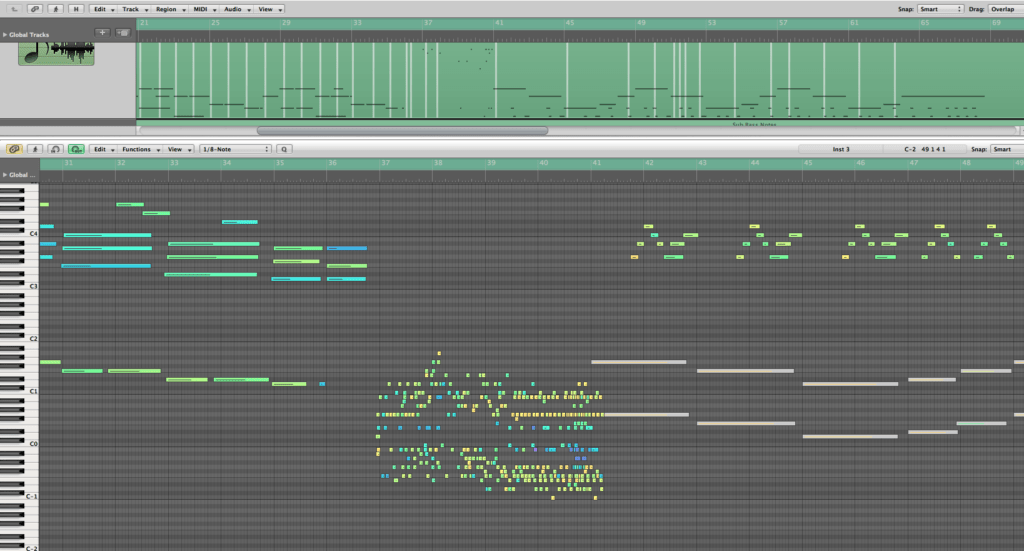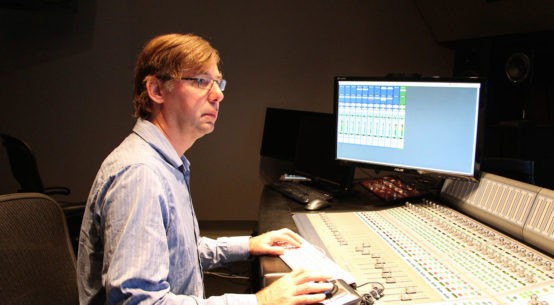
Review by Andrew Overfield
Edited by Alyx Jones
Developer: Cinematic Studio Series
Composer: Andrew Overfield
Sound Designer: Alex Wallbank
Reviewed on: MacBook Pro 16GB DDR3 2.2GHz i7
Cinematic Studio Piano (CSP) joins the Cinematic Studio Series’ (CSS) lineup alongside Cinematic Studio Strings which I reviewed back in August. You can see this review -> HERE <-
Setup & Interface
The installation is once again very easy, offering a 4.5GB installation. The authorisation process is simple and you can fire the library up in next to no time. The library runs in Kontakt Player,
which provides easy navigation to your instrument.
Following suit from CSS, the interface is very self-explanatory. You have a number of mic positions to choose from (Spot, Close, Main & Room) and the option to allow Key and Pedal Noise. There’s also a handy Reverb curve you can add some wetness to the instance, or have it as dry as you like. It offers a versatile and simple layout to get you composing efficiently.
That’s pretty much it! For information purposes, with everything switched on and to 11, this instrument only uses 250.70MB of RAM on the main piano. Whilst the CSP Piano FX only uses 22.32MB.
The GUI is clean and leaves no room for misinterpretation. No text seems out of place and in my opinion is the easiest simple piano library to navigate.

Sound
What you see is what you get. The team have sampled a Yamaha C7 Grand carefully using the same methods as CSS and I can’t fault it whatsoever. I compared the sound using exactly the same MIDI stem on a number of my “go-to” piano libraries and this trumps them all in terms of overall versatility and ease of use.
The note response isn’t jarring, especially on pedal stops and the velocity sensitivity is perfect. So far it has accommodated many of my piano pieces in terms of being able to sit across the sonic spectrum of harsh, proud playing and also soft, somewhat ambient notes.
You may require some tweaks using other plugins to achieve a delay on the attack but that’s nothing major at all. I compared the library with a recording of what I remember is a Yamaha C3 (from my university days), and trying to emulate the room tone as best as I could, it stood very well against the live recording.

In this review I purposely haven’t recorded a video overview. Based on comments from the last review, it seems I need to spend some time tweaking my capturing method, the video review for CSS did not do the sound justice at all. After a conversation with the gents regarding the library they have been ever-so generous with their support. And I have now utilised my setup and CSS, while still using a generous amount of RAM, sits comfortably amongst my other string libraries in terms of memory usage.
I have, however recorded a short demo, which I aimed to demonstrate as many possibilities of CSP that I could.
You will hear notes with and without a sustain pedal, clustered chords and an array of other sounds I have created using CSP alone. This includes how well the library handles a large amount of multiple notes played in one instance. Now, I am not pianist by any stretch of the imagination, and I anticipate a trained pianist may be able to utilise the sound much better than I, but it more than serves it’s purpose for what I need. This piano now acts as my primary piano in all of my recent compositions.
There’s also a handy sound effects instrument which gives an array of percussive, tonal and weird sounds you may get from plucking strings and such, a very nice touch and I can see these being added to a sort of horror/ambient soundscape scenario.
Overall
At $69 this library is pretty much a no-brainer. Given the fact that you get a comprehensive version of one singular piano, which sounds amazing and the added fact that it’s a Kontakt Player library meaning easier to load up and get composing, this library is a must-have.
The interface matches the rest of the Cinematic Studio Series, which adds a recognisable aesthetic quality for any current users.
I would say that this is complete value for money, and even if you have a piano library you have which you may feel is a bit tired or you’ve gotten a bit too used to it then you won’t exactly break the bank trying out this intimate piece of kit.

There are no negatives with this review, only suggestions really. I’d love to see an expansion of the Cinematic Studio Piano series to possibly incorporate further additions of piano or keys-related instruments. Maybe a Steinway model or even such as a Hammond B3 organ? It would be interesting to see if and how it grows.
Have a listen to my demo, see what you think and until next time….
LINKS
Official
Cinematic Studio Piano
Cinematic Piano Soundcloud
Cinematic Strings
Twitter
@cinematicstring
@alex_wallbank
We hope you enjoyed Andrew’s review, check out others in our Reviews section. Don’t forget to sign up to our Monthly Newsletter to make sure you don’t miss out on our reviews and interviews.
We’re also running a Patreon campaign to make sure we can keep bringing you regular, high quality content if you’re feeling generous! Thanks for even sharing!
The Sound Architect




